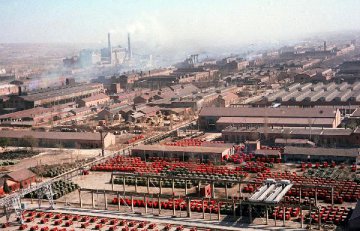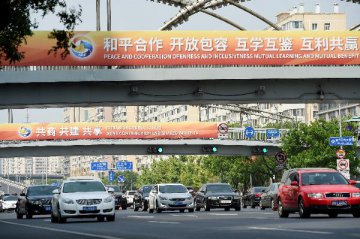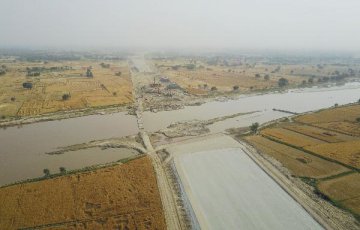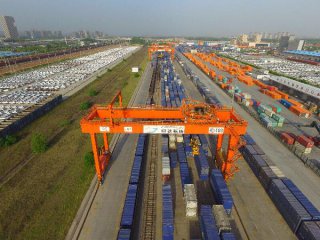
The first freight train operating on the Yiwu-London rail line arrived back at Yiwu railway port in Yiwu, Zhejiang province several days ago. This train stretching across Eurasia not only facilitates material trades of countries along the rail line but also boosts international cooperation between domestic and foreign insurance industries.
“Right now we are taking over with Chinese-funded insurance companies about how to be involved in insurance business related to the China-Europe freight train and we may improve our insurance capacity via reinsurance.” said Zeng Wanli, director of Allianz Global Corporate & Specialty AG. “On the other hand, we also hope to provide more value-added services in aspects of issuing insurance policy, settlement of claims and loss prevention with the help of Allianz’s powerful service network in Europe and around the world.”
China-Europe freight train is one of the new trials. With the Belt and Road Forum for International Cooperation upcoming, Chinese and foreign insurance industries have targeted this market with huge potential. Nina Klingspor, member of the board of directors and CFO of Allianz Global Corporate & Specialty AG, remarked that he was the most rosy about the business opportunities of insurances for projects and energy arising from the Belt and Road Initiative. Most projects are under early stage of construction at present, and they are expected to become an important driver for premium income growth in the medium- and long-term although the specific business size cannot be predicted. “The Belt and Road Initiative is expected to involve 8-trillion-US dollars investment in infrastructure, which will derive tremendous demands for insurance including trade credit insurance.”
Data shows that outbound investment driven by the Belt and Road Initiative grows gradually. No matter the new non-financial direct outbound investment that Chinese enterprises made in countries along the Belt and Road Initiative route in the first quarter or turnover of foreign contracted project contracts between Chinese enterprises and countries along the route showed a momentum with year-on-year growth.
More trade contacts and engineering projects bring more risks and challenges to Chinese enterprises. Allianz’s report on enterprises risks for 2017 showed that the three biggest risks that Chinese enterprises face in 2017 include market development (intensifying competition, mergers & acquisitions and market stagnation), service interruption (including supply chain disruption) and natural disasters (like storms, floods and earthquake). These risks need insurance institutions to provide corresponding risk control tools.
Besides offering insurance services, insurance companies can join in construction of major projects of the Belt and Road Initiative through setting up funds. The China Insurance Regulatory Commission issued a document on April, encouraging insurers to give full play to insurance funds, actively innovate ways of insurance funds utilization and invest in major investment projects of the Belt and Road Initiative via multi-channels.
By the end of 2016, 592.264 billion yuan of insurance funds had been invested to support development of the Belt and Road Initiative in form of creditors’ rights and equity plans, according to statistics from Insurance Asset Management Association of China.
Insurance funds seek for long-term and stable returns on investment and infrastructure construction is a kind of investment target which most meets this demand. Infrastructure construction projects across the world will significantly benefit from promotion of China-proposed Belt and Road Initiative, Nina added.
Translated by Vanessa
























Latest comments